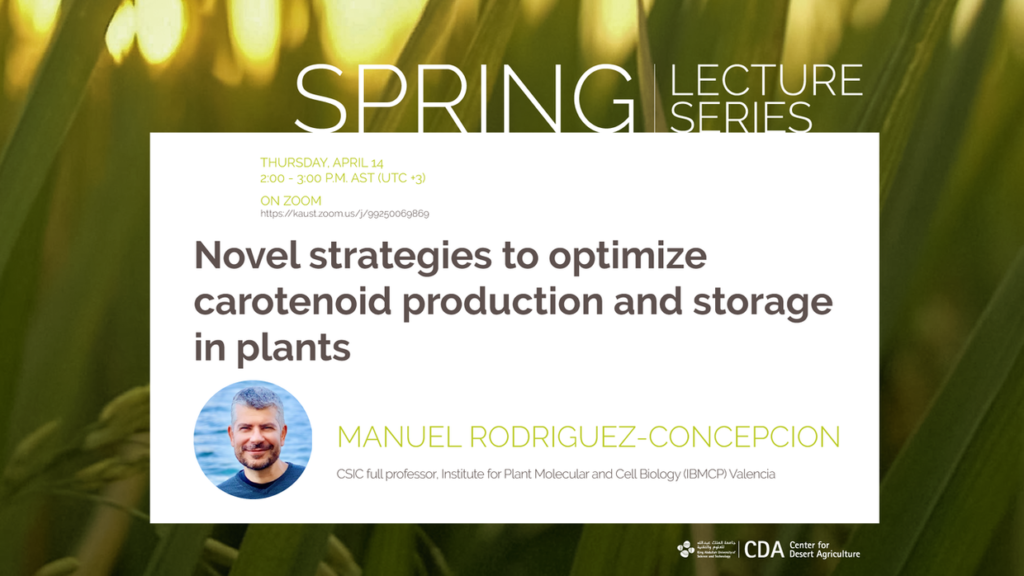
Thursday, April 14
2:00 – 3:00 p.m.
On Zoom
Novel Strategies to Optimize Carotenoid Production and Storage in Plants
Professor Dr. Manuel Rodriguez-Concepcion
CSIC full professor, Institute of Plant Molecular and Cell Biology IBMCP-Valencia
Theme: The many facets of chloroplasts – hosted by Dr. Juan Camilo Moreno Beltran.
Abstract
Biofortification of foodstuffs with health-promoting metabolites such as carotenoids is a powerful tool to fight against hidden hunger. Dietary carotenoids are vitamin A precursors and reduce the risk of several chronical diseases. In the last few years, our work unveiled novel molecular mechanisms regulating the levels and activity of carotenoid biosynthetic enzymes and created artificial chromoplasts for improved carotenoid biosynthesis, storage and bioaccessibility. Additionally, we explored the feasibility of moving the production of carotenoids away from plastids. The impact of these strategies on the biofortification of leaves and other green tissues with carotenoids will be presented.
About the speaker
Dr. Rodriguez-Concepcion completed his Ph.D. thesis in 1995 at the IATA-CSIC (now IBMCP) in Valencia, Spain. In 1996 he moved to Univ. California at Berkeley, USA, where he developed his interest in isoprenoids as a postdoc. In 1999 he moved to Univ. Barcelona, Spain, as a senior postdoc, and in 2001 he was granted a “Ramón y Cajal” award to start his independent research line on carotenoids.
In 2006 he joined the CRAG in Barcelona as a CSIC Assistant Professor. He was promoted to CSIC Associate Professor in 2010 and to CSIC Full Professor in 2020. In 2021 he moved to IBMCP in Valencia. His work has revealed novel components controlling the metabolic pathways that synthesize carotenoids and related isoprenoids at transcriptional and post-transcriptional levels.
Visit the Spring Lecture Series webpage to view the full schedule and learn more about the upcoming lectures.
This opportunity is brought to you by the Center for Desert Agriculture.


